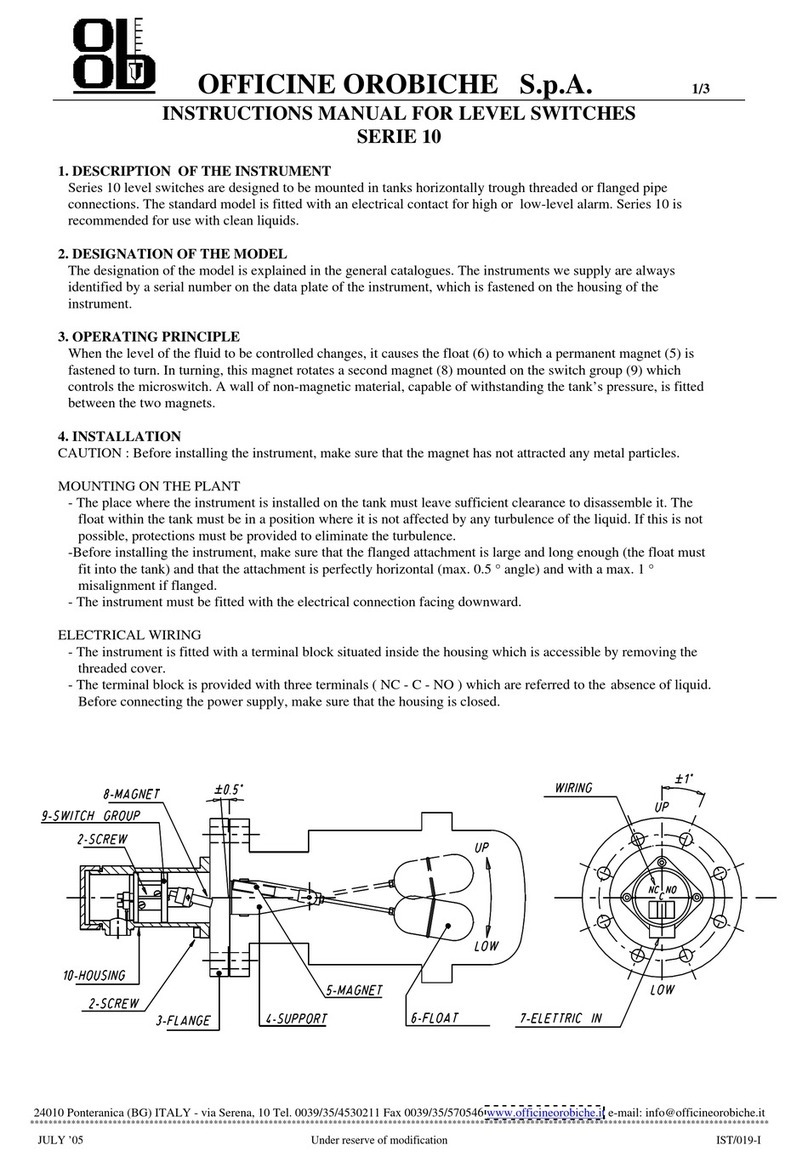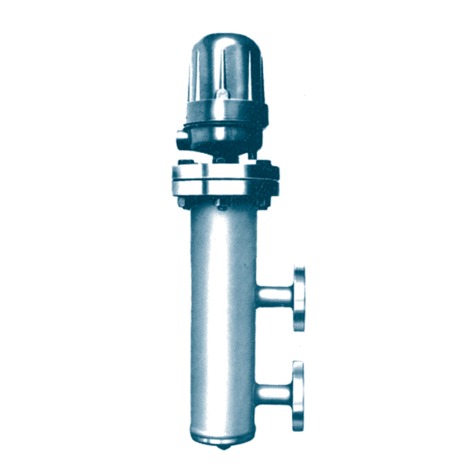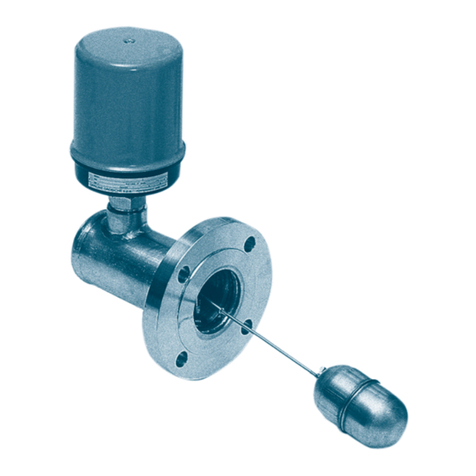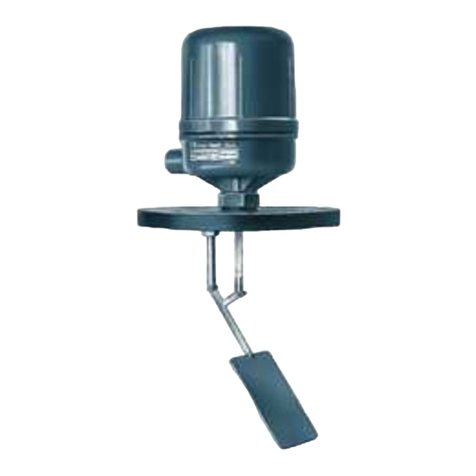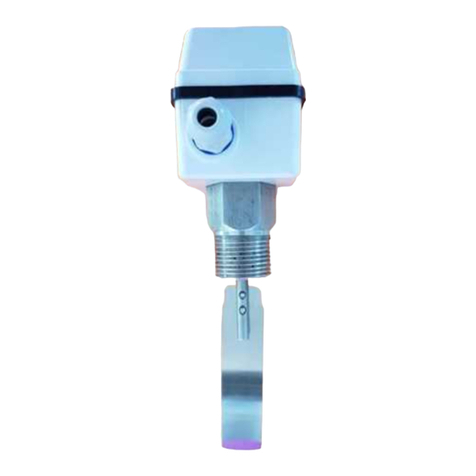
OFFICINE OROBICHE S.p.A.
3
/
13
24010
Pont
eranica
(BG)
I
T
AL
Y
-
via
Sere
na,
10
-
Phone
0039/0
35/4
5302
11
-
Fax
0039
/035
/5705
46
-
ww
w.off
icineorobiche.it-e-mail:
[email protected]
*************************************************************************************************************************************************************
JULY ’14 Information subject to change without prior notice IST/153-I
5. SETTING AT WORK
Make sure that the use of the instrument does not exceed the intended conditions of use (higher temperature and pressure
values, lower specific weight) and that the applied electrical rated value complies with the rating plate values.
Verify that the instrument operates a correct switchover, by making the fluid level vary a few times.
6. CALIBRATION
The adjustment of the tripping unit is performed by moving the displacer along the rope the instrument is equipped with.
Ensure you have firmly locked the displacer before introducing it into the vessel.
No adjustment shall be made on the tripping unit, which is factory-set.
7. MAINTENANCE
We suggest carrying out a periodic routine servicing (once every 6 months approximately) to ascertain the correct service
state of the instrument.
All maintenance actions need to be carried out when the instrument is depleted of pressure and fluid, at room temperature (in
the event of units working at high or low temperature) and disconnected from the contact feeding voltage.
7.1 WARNINGS
- NEVER open the lid without being sure that voltage has been discontinued;
- NEVER leave the case without its lid for longer than the inspection time;
- NEVER use the instrument at a temperature or a pressure that exceeds the values specified on the rating plate;
- NEVER use the instrument at an electrical rating that exceeds the value specified on the rating plate;
- NEVER perform settings or replace parts without having read the instructions beforehand; in case of doubts, please contact
our customer service department;
-NEVER lubricate any part of the instrument;
-In cases when the instrument is used at high temperature values, always take all the precautionary measures required to
safeguard the working staff during the maintenance work stages.
7.2 ROUTINE CHECKS ON THE DISPLACER
Ensure the vessel is drained of all liquid.
- Separate the instrument from the vessel by unscrewing the related bolts.
- Extract the displacer by lifting the body flange (take care not to spoil or damage the rod, the displacer and the spring);
- Inspect the stilling tube and check it is clean from incrustation and/or deposit (if any such deposits are found, perform a
thorough cleaning);
- Remove the union and take care not to fold the rod;
- Inspect the pit inside making sure it is free from incrustation (clean with care if necessary);
- Place the union back in place;
- Ensure that the displacer, the rod and the spring are free from incrustation (carefully clean, if necessary);
- Manually lift and lower the spring unit, and check that the whole set can freely slide;
- If the spring shows corrosion marks, replace the parts;
7.3 REPLACING THE DISPLACER AND/OR THE ROPE
After pulling the displacer out (see par.7.2), hold the damaged displacer in place, unscrew the screw that locks it to the rope.
Place the new displacer, remember to lock it tightly to the rope.
If the rope shows marks of breaks, it needs replacing, by unscrewing the screw that locks it to the instrument.
The new rope, it too long, needs to be cut at the required length.
Remember to tightly lock the new rope before fitting the instrument back in place.
Perform all the checks as mentioned in paragraph 7.2.
7.4 ROUTINE CHECKS ON THE CONTACTS
Discontinue the voltage supply.
With the lid open, perform a sight check to ensure that the tripping unit does not have damaged or aged parts, manually
actuate the magnet to test whether the miniature switch correctly performs the switchover.












